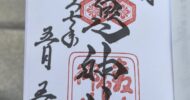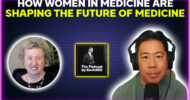When we think about palliative care, our first instinct is to picture pain medications, symptom checklists, and clinical protocols. But for patients with terminal brain cancer, the reality is much more complex. As speech declines, as motor function deteriorates, and as identity itself feels threatened, the greatest need is not always more medicine; it is meaning, connection, and dignity.
In recent years, I have had the opportunity to study an ancient art form that offers something profound at this stage of life: Japanese calligraphy, or shodō. More than a form of handwriting, calligraphy in Japan is rooted in Zen Buddhism and cultural traditions that emphasize presence, stillness, and reflection. Every stroke of the brush is final, impossible to erase, much like life itself. What struck me most is how this practice can become a final voice for patients whose words are fading. A single kanji character, such as 愛 (ai, love), 忍 (nin, endurance), or 命 (inochi, life), can capture a patient’s final message to family when speech is no longer possible.
The science behind this is compelling. Writing with a brush engages fine motor pathways, visual-spatial attention, and emotional processing networks in the brain. Studies in Asia have shown improvements in mood and cognition when older adults practice calligraphy, and in our clinical observations with patients who have brain tumors, the results have been even more powerful. At Kyoto University Hospital, patients who participated in calligraphy sessions during their final weeks reported less existential distress and greater emotional closeness with their families. One caregiver told us, “It was the first time in weeks my father said something with his hands that words could no longer express.”
I have also seen how this practice transcends borders. At St. Christopher’s Hospice in London, patients were introduced to calligraphy through workshops led in collaboration with the Japan Foundation. Despite initial hesitation, many participants (none of them Japanese) found the act deeply moving. One patient with a brain tumor, whose hand shook uncontrollably, traced the character for 風 (kaze, wind). Afterwards, he said it reminded him of change and calmness. Staff noticed he became more socially engaged and visibly calmer. Even across cultures, meaning travels further than tradition.
In the United States, calligraphy therapy has begun to find a place in integrative medicine. At Stanford, a calligraphy retreat for neuro-oncology patients and caregivers revealed something remarkable: Every participant reported emotional relief, and most described the practice as a new form of communication. What these programs have in common is not only the brush and ink, but the creation of a space where patients can reclaim voice, identity, and presence in a moment when so much else has been lost.
Of course, bringing Japanese calligraphy into Western palliative care is not without challenges. Health care systems under strain may question the practicality of such interventions. Administrators want evidence, staff often lack time, and cultural sensitivity is crucial to avoid reducing calligraphy to a decorative activity. But when done with respect and proper framing, this is not about exoticism. It is about giving patients one more way to speak.
Next month, I will travel to Paris to present this work at the annual meeting of the Société Française d’Accompagnement et de Soins Palliatifs. Standing there, I will carry with me the brushstrokes of patients in Tokyo hospices, in London wards, and in American integrative care clinics. My hope is that these stories can inspire colleagues in Europe to imagine what it means to widen our definition of evidence. We may never measure dignity, peace, or meaning as easily as we measure pain scores, but that does not make them any less real, or less essential to medicine’s purpose.
At the end of life, when most therapies have failed, it is often art that remains. A brush dipped in ink can help patients leave a legacy, communicate without words, or simply find calm. In the quiet of those moments, medicine meets art not in opposition, but in harmony. From Tokyo to Paris, and hopefully far beyond, the brushstroke continues to remind us that every voice still matters, right up to the final one.
Vikram Madireddy is a neurologist. Francesco Panto is a psychiatrist. Both are based in Japan.

















![Rebuilding the backbone of health care [PODCAST]](https://kevinmd.com/wp-content/uploads/Design-3-190x100.jpg)

![Escaping the trap of false urgency [PODCAST]](https://kevinmd.com/wp-content/uploads/Design-4-190x100.jpg)

![A neurosurgeon’s fight with the state medical board [PODCAST]](https://kevinmd.com/wp-content/uploads/Design-1-190x100.jpg)


